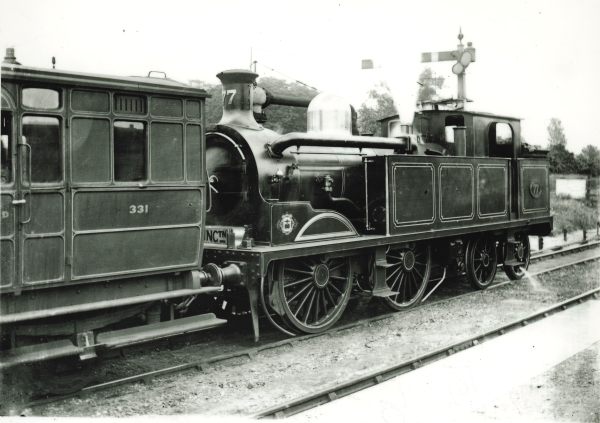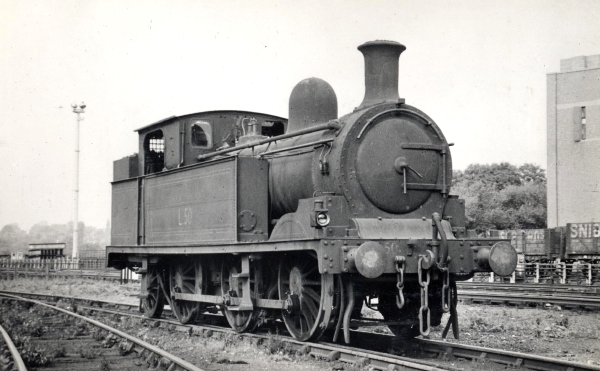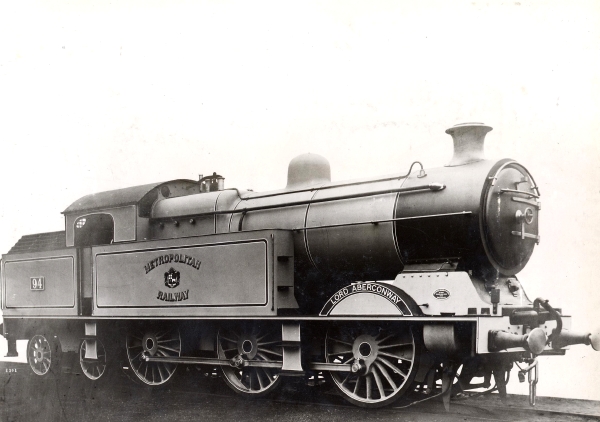0-4-4 Metropolitan Railway locomotive 'No. 77' See Details
The first true Metropolitan Railway design appeared in 1896 with the emergence of the 'E' class 0-4-4 tank locomotives. They were they work of T. F. Clark, and were an enlargement of the unsuccessful C class. With a tractive effort of 15,000 lb. and driving wheels of 5' 6' diameter, the handsome E class was well suited to the hard main line work to Aylesbury and Verney Junction. Pictured above is pioneer E class 0-4-4, No. 77, seen at West Hampstead circa 1897. Like many of the Metropolitan locomotives, this example is fitted with condensing apparatus. One of the class, No. 1 of 1898, is today preserved at the Buckinghamshire Railway Centre at Quainton Road.
0-6-2T Metropolitan F-Class locomotive See Details
In line with the growth of passenger traffic on the Metropolitan Railway, a steady expansion of freight traffic was also in evidence, and much of this came from the Great Central Railway. To handle this growing commodity, T. F. Clark ordered four 0-6-2 tank locomotives from the Yorkshire Engine Company in 1901. These were designated as the 'F' class, and were simply a freight development of his E class 0-4-4's. The new engines had a greater coal and water capacity than their passenger counterparts and, with a smaller driving wheel diameter of 5 feet, they could march away with the Metropolitans heaviest good trains. None of the class was fitted with train heating equipment, and they very rarely saw passenger service work. The above picture shows F class, 'L 50', carrying its London Transport number at an unknown location.
0-6-4T Metropolitan G-Class locomotive No. 94 See Details
Built by the Yorkshire Engine Co. in 1915, this is the Metropolitan Railway's 0-6-4T 'G' class locomotive No. 94, LORD ABERCONWAY. The company's Chief Mechanical Engineer, Charles Jones (who had replaced Clark as Chief Engineer in 1906) , had designed the G class as a more powerful engine that could handle the increased volume of goods and passenger traffic brought on by the First World War. Despite being superior in design and performance when compared with any previous Metropolitan engine, only four of the 'G' class were produced. In addition to their numbers (Nos. 94-97), the locos carried names on the leading splashers - Lord Aberconway being the Metropolitan's Chairman at the time.










